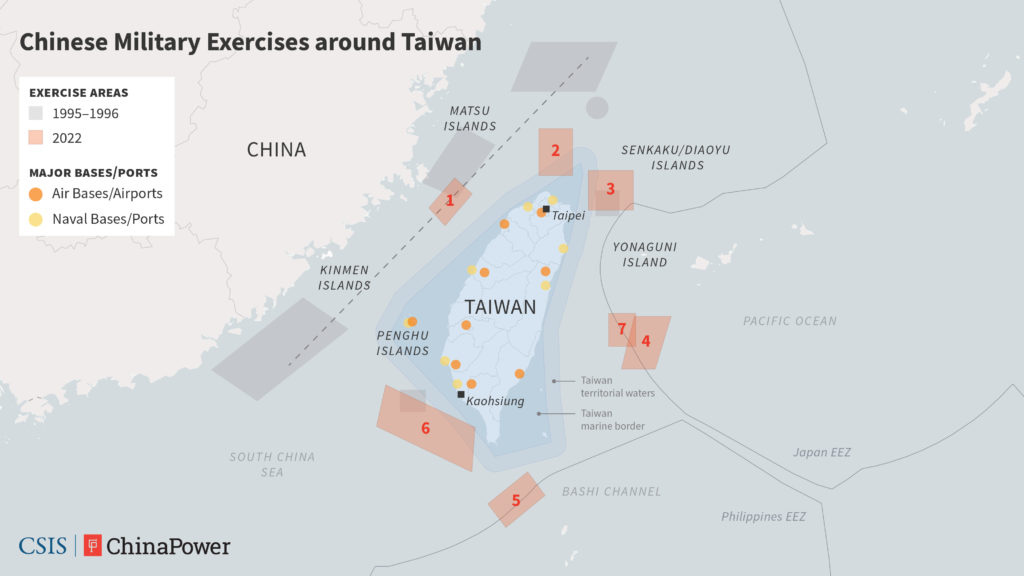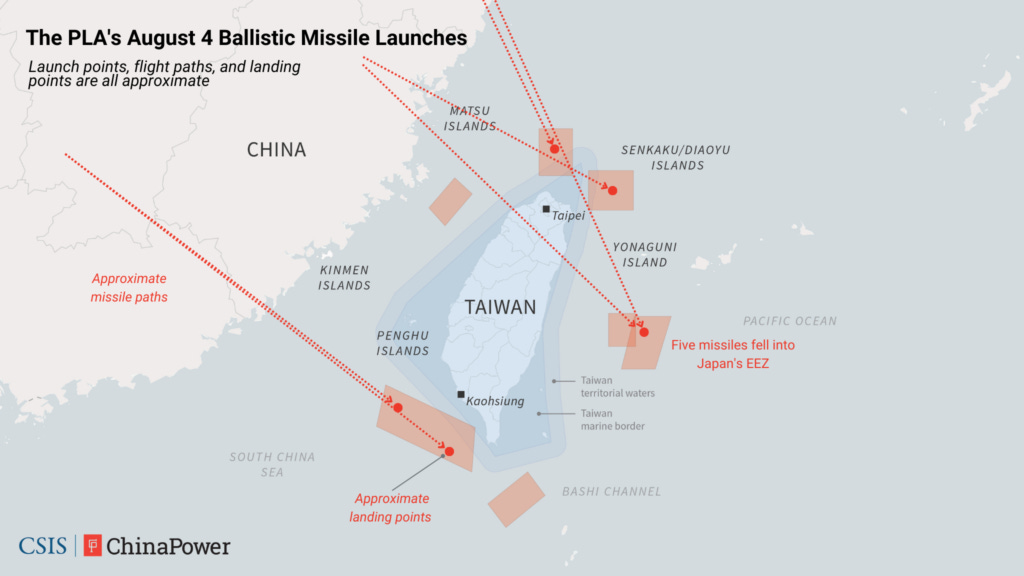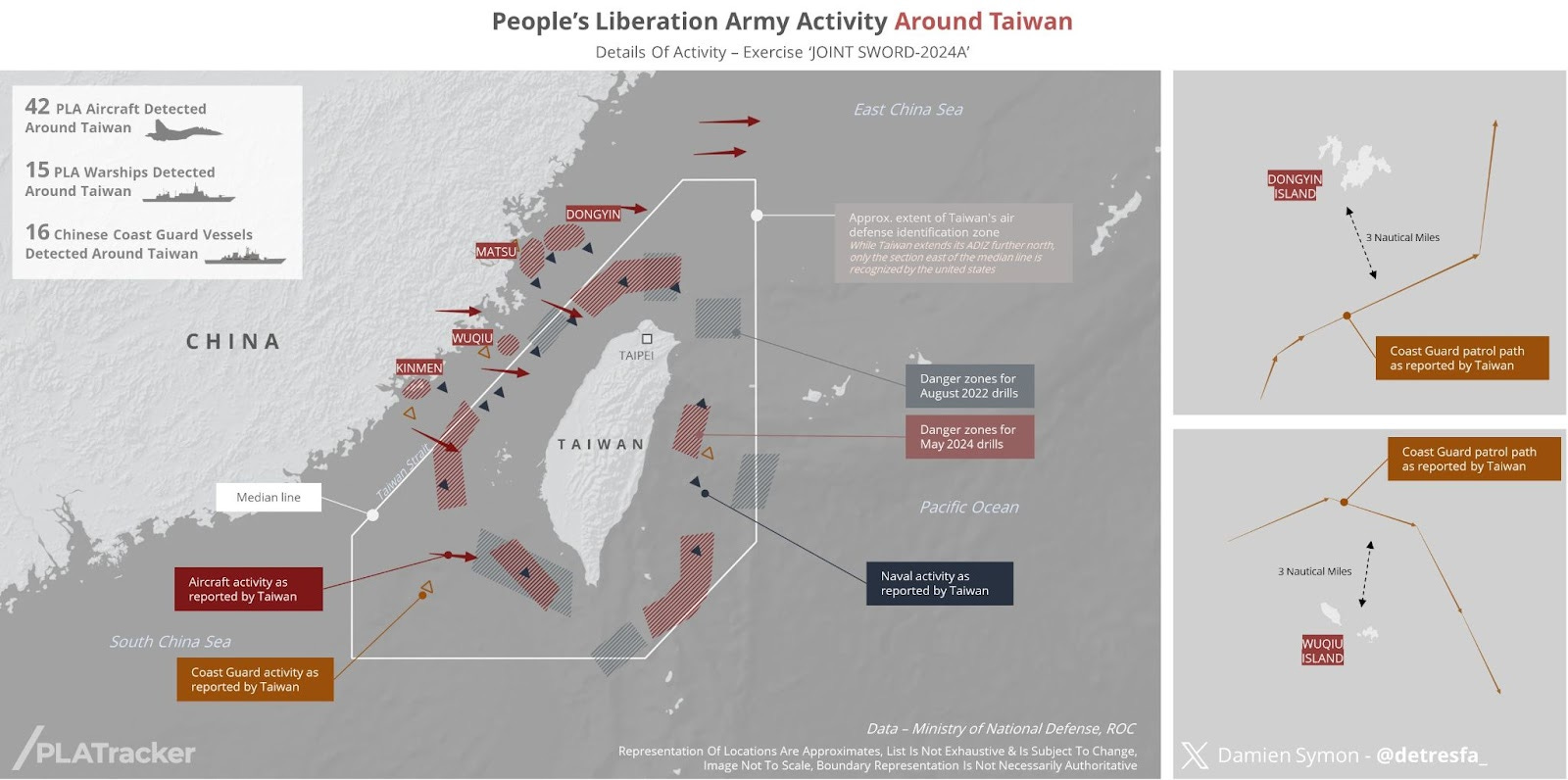Taiwan’s Tightrope: The Window for War & the Path to Peace
How Taiwan Can Balance Autonomy and Aggression in the 21st Century

Key Insights (TL;DR): A Tricky Situation
The Taiwan Strait has become a focal point for geopolitical tensions, with the potential for conflict significantly escalating in recent years.
Increased media attention, high-profile political visits, and military maneuvers have all contributed to a precarious situation that threatens regional stability.
Following Nancy Pelosi's visit to Taiwan in August 2022, China conducted unprecedented military exercises, marking the Fourth Taiwan Strait Crisis. These exercises, characterized by their scale, proximity, and sophistication, have heightened fears of a potential military conflict.
The United States responded by bolstering Taiwan's defense capabilities through arms sales and military presence, including freedom of navigation operations in the Taiwan Strait. However, these actions have also contributed to rising tensions, as China perceives them as direct threats to its sovereignty.
The global implications of potential escalation scenarios are profound. They could potentially disrupt international trade, particularly in the semiconductor industry, and trigger a global economic crisis.
Fourth Taiwan Strait Crisis and Beyond: Bigger, Bolder, and Ballistic
After Nancy Pelosi's unprecedented visit to Taiwan in August 2022, China conducted extensive military exercises around Taiwan, marking the Fourth Taiwan Strait Crisis. These exercises were unparalleled in scale, proximity, and sophistication, surpassing those of the Third Taiwan Strait Crisis in 1995-1996 (CSIS).

The exercises were conducted in seven zones encircling Taiwan, disrupting international waterways and aviation routes. Notably, China fired multiple ballistic missiles over Taiwan, a provocative act that demonstrated its military capabilities and resolve.
The result was a show of force intended to deter U.S. involvement in what China considers its internal affairs and demonstrate its military prowess to both international and domestic audiences.

The Fourth Taiwan Strait Crisis is the most unprecedented and severe of all China-Taiwan flashpoints in history due to the increased sophistication and extensive use of military and non-military tools.
The PLA's exercises included joint containment and support operations, such as aerial refueling and sea support, showcasing advanced military capabilities and operational readiness (Britannica, CSIS)
Maintaining US Hegemony: Covert Encroachment and Overt Support

The U.S. continues to support Taiwan through arms sales and a military presence in the region, including freedom of navigation operations (FONOPs) in the Taiwan Strait (USNI).
Additionally, the U.S. seeks to contain China's power by strengthening alliances with neighboring countries. While these actions aim to deter Chinese aggression, they also contribute to rising tensions.
The U.S. has also increased arms sales and military assistance to Taiwan, including foreign military financing (FMF) assistance worth up to $345 million (Reuters). This support aims to bolster Taiwan's defense capabilities and deter Chinese aggression.
The deployment of US Green Beret Special Operators to Kinmen, a strategic military outpost a few miles off the mainland, also raises questions about the intentions of US covert military operations in Taiwan (sofrep).
Although officially stated to bolster Taiwan's defense readiness and signal U.S. commitment to Taiwan's security, they are also capable of covert operations, including intelligence gathering, surveillance activities, or even potential sabotage missions (History.com).
The deployment has significant implications for escalating tensions between the U.S. and China. Beijing may view this as a highly provocative move due to the Green Beret’s history of conducting unconventional warfare activities to disrupt or overthrow enemy governments or occupying powers (History.com).
The Gray Zone Playbook
In response to US gray zone tactics—such as tariffs, sanctions, information campaigns on Hong Kong, Taiwan, and Xinjiang, etc.—as well as direct military support and arms sales for Taiwan, the People's Republic of China (PRC) has escalated its use of gray zone tactics.
These tactics, which operate in the ambiguous space between peace and war, aim to coerce and intimidate Taiwan while avoiding full-scale military conflict. Ranging from military blockade-like exercises to cyberattacks and economic coercion, they exploit the ambiguities in international law and norms.
China has continued its military activities near Taiwan, including significant exercises in April 2023 after President Tsai Ing-wen’s transit through the United States. These actions are part of China’s strategy to coerce Taiwan and signal its readiness to use force if necessary.
China conducted large-scale military exercises around Taiwan, such as the "Joint Sword" exercises in April 2023 and May 2024. These drills, which involve the People's Liberation Army (PLA), are designed to demonstrate China's military capabilities and readiness.

The Skies and Seas of Conflict: China's Multi-Domain Aggression
By Air, China has significantly increased its military activities around Taiwan, including frequent incursions into Taiwan's Air Defense Identification Zone (ADIZ). These actions are intended to demonstrate China's ability to exert control over Taiwan and deter foreign intervention.
By Sea, The PLA Navy (PLAN) has increased its presence around Taiwan, conducting operations that challenge US and allied naval forces in the region. These operations include unsafe and unprofessional maneuvers near American and allied military assets.
Naval tactics have also escalated into the South China Sea, where China has deployed its maritime militia, often disguised as civilian fishing vessels, to assert its claims and engage in confrontations with the Philippines and other nations (Nicchiarelli 2023)
Potential Escalation Scenarios: From Limited Conflict to a Proxy War
Despite efforts to stabilize U.S.-China relations, including a summit between U.S. President Joe Biden and Chinese President Xi Jinping in November 2023, tensions remain high. Most experts believe these efforts have not significantly reduced the likelihood of a Taiwan Strait crisis (Global Guardian).
Recent skirmishes with the Philippines are viewed as part of China's strategy to assert dominance and prepare for potential blockades or other military actions in the South China Sea.
In the 2024 study of 52 “experts,” the majority viewed a blockade as more likely than a full-scale invasion (China Power). Although many do not believe they have the capabilities to execute an effective invasion, experts agree that a blockade could escalate into an invasion (Alperovitch).
Limited Conflict: A Blockade or Quarantine
The possibility of a "limited conflict" involving a Chinese blockade around Taiwan has become a focal point of geopolitical analysis, especially following the 2024 Taiwan elections and escalating tensions in the region.
Quarantine vs. Blockade
China could initiate a quarantine, inspecting and diverting merchant ships to demonstrate control over Taiwan without a total blockade. This would be framed as a "peaceful" measure to prevent contraband, leveraging China's position in the UN to mitigate international backlash (Global Guardian, CSIS)
A more escalatory step would be a complete blockade, cutting off all inbound shipping to Taiwan, devastating its economy, and forcing political concessions.
A complete blockade would aim to erode Taiwan’s and the West’s resolve, potentially escalating into kinetic actions if challenged by the U.S. or its allies (Global Guardian, War on the Rocks).
De Facto Blockade
China might start with military exercises that gradually expand in scope and duration, simulating a de facto blockade. This approach allows China to test international reactions and adjust its strategy accordingly.
The Chinese Coast Guard (CCG) and maritime militia would potentially play critical roles in enforcing the blockade, using non-military means to assert control and avoid direct military confrontation initially (CSIS).
Global Implications
A blockade would severely disrupt Taiwan’s trade, particularly its critical semiconductor exports, leading to significant economic hardship.
Taiwan’s economy relies heavily on international trade, and a blockade would cripple its supply chains and access to essential goods (Global Guardian, Alperovitch).
The global economy would suffer from disruptions in the supply of semiconductors and other critical goods from Taiwan. The blockade could trigger a global economic crisis, affecting industries reliant on Taiwanese exports.
The blockade could force a reevaluation of the international status quo regarding Taiwan’s political status.
If China does not lift the blockade, the U.S. and its allies might consider intervening and, in the process, recognize Taiwan’s independence, fundamentally altering the One China Policy and marking an escalation in tensions.
Proxy War Invasion Window (2024 - 2028)
The potential for a proxy war over Taiwan between the U.S. and China is a significant concern in international relations. The period from 2024 to 2028 is increasingly viewed as a critical window for potential conflict over Taiwan.
Key Events and Timelines to Watch
2024: U.S. and Taiwan Elections: The U.S. presidential election could create a temporary distraction, potentially increasing the risk of aggressive Chinese actions (Will China Invade Taiwan? A Potential Timeline for Conflict).
2025: Taiwan's Outside Date for Invasion: Experts suggest China may be prepared for an invasion by this year, increasing the probability of conflict (Why China-Taiwan Relations Are So Tense).
2027: PLA Centennial: The centennial of the PLA could coincide with military demonstrations or strategic moves, peaking the probability of invasion.
2030: U.S. Nears Semiconductor Sovereignty: As the U.S. becomes less dependent on Taiwanese semiconductors, China's strategic interest might decrease, lowering invasion probability (ui.se).
2030s: Chinese Demographic Burden: Economic pressures from demographic changes might shift China's focus inward, further reducing the likelihood of invasion (RAND).
Trump's Gambit on Taiwan
Former President Donald J. Trump has once again stirred the waters of international diplomacy with his recent remarks on Taiwan. In a Bloomberg Businessweek interview, Trump suggested that Taiwan should pay the United States for its defense, likening the U.S. to an insurance company.
Lukewarm to Hot: Possibility of Full-Scale Invasion
While less likely, a full-scale invasion remains a possibility. This would involve a massive military operation by the People's Liberation Army (PLA) to take control of Taiwan.
Global Guardian experts estimate the likelihood of an all-out invasion at around 35% (Global Guardian). They consider a blockade more likely but acknowledge the potential for a full-scale invasion, especially if China perceives a closing window of opportunity or heightened provocations from Taiwan or the U.S.(Global Guardian).
According to another expert consensus, the likelihood of invasion – in the next five years – ranges from 6% to 77%, depending on whether the goal is to punish/coerce Taiwan or force reunification (Read More: Surveying the Experts: U.S. and Taiwan Views on China's Approach to Taiwan in 2024 and Beyond | ChinaPower Project).
Again, take experts' opinions with a grain of salt.
In the event of an invasion, the People's Liberation Army (PLA) would first disrupt the Republic of China's (ROC) military command and control systems during the initial stage. This would make communications, missile targeting systems, and military radar ineffective (Taiwan News).
Afterwards, the PLA would initiate amphibious assaults, air strikes, and missile attacks to overpower Taiwan's defenses. The breakdown of ROC’s chain of command could prompt a direct military response from the US and its allies, particularly Japan.
Given Taiwan's dense urban environment, the conflict could devolve into protracted urban warfare, resulting in significant casualties and destruction. Taiwan's cities will be turned into battlefields where guerrilla tactics can be employed to disrupt and harass occupying forces.
Taiwan Foreign Minister Joseph Wu has warned that 2027 is a critical year for a potential Chinese invasion. Wu's warning is based on China's military modernization timeline and the political significance of the year for the CCP – the 100th anniversary of the PLA (The Guardian).
In reality, an invasion could happen as early as 2025. In 2019, Former Japanese Air Self-Defense Force (JASDF) Air Support Commander Orita Kunio (織田邦男), suggested China aims to take Taiwan by 2025 and even projects their power to Okinawa (US Military Base) by 2040 (Taiwan News).
The recent militarization of Japan, a historically pacifist nation post-WW2, signals the seriousness and urgency of the situation.
“The world has entered an age where we must choose between U.S.-centric values of liberty (Pax Americana) or Chinese-centric oppression (Pax Sinica). The Free and Open Indo-Pacific is a counterstrategy against China’s ‘One Belt, One Road’ initiative, and aims to unite countries that share the values of freedom, democracy and human rights.”
- Orita Kunio (織田邦男), Former Japanese Air Self-Defense Force (JASDF) Air Support Commander (Taiwan News)
In addition, a leaked memo by Air Mobility Commander Gen. Mike Minihan also suggested 2025 as a potential invasion year, adding fuel to the urgency of the situation (Air & Space Forces) …
[To be Continued]
Post Preview[Coming Soon][Final Part II]:
A Strategic War in the Taiwan Strait: A Closing Window

US: Taiwan’s Strategic Autonomy
The U.S. has a strategic interest in maintaining Taiwan's autonomy to counter China's influence in the Indo-Pacific region. Taiwan's strategic location and its role in global semiconductor manufacturing make it a critical ally for the U.S. (Global Guardian, UPenn).
The US continues to focus on strengthening Taiwan’s self-defense capabilities and maintaining its de facto independence. Moreover, the DPP government in Taiwan has increased its defense spending and sought closer military ties with the US and other allies.
CCP: Reunification
China views Taiwan as a breakaway province and is committed to reunification, using force if necessary. Taiwan's strategic importance and its symbolic value for Chinese nationalism drive Beijing's determination to assert control over the island.
Under President Xi Jinping, China has significantly modernized its military, focusing on capabilities that would be critical in a Taiwan conflict, such as amphibious assault forces, missile systems, and cyber warfare capabilities..





